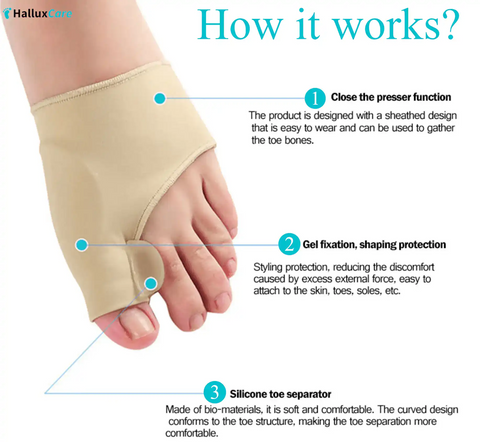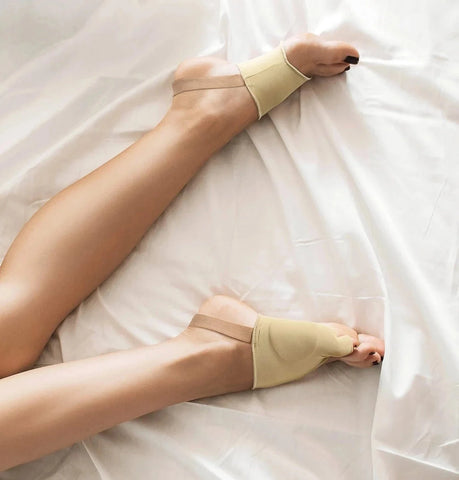The Search for the Perfect Wide Shoes: Comfort Meets Functionality
Last Updated: January 8th 2025
Author: Dr. Emily Harper, DPM – Board-Certified Podiatrist
When it comes to finding the right pair of wide shoes, the process can feel overwhelming, especially for those dealing with bunions, plantar fasciitis, or other foot ailments. However, with the right guidance and tools, you can find shoes that offer comfort, functionality, and style—all without breaking the bank.
This guide is designed to provide practical advice, expert-backed insights, and real-world solutions to help you make informed decisions about your footwear.
Why Wide Shoes Matter for Foot Health
The Importance of Toe Space
Tight or ill-fitting shoes can lead to or worsen several foot conditions, including bunions, hammertoes, corns, and calluses. Shoes with a wide toe box allow your toes to spread naturally, reducing pressure and irritation.
Expert Insight:
According to the American Podiatric Medical Association (APMA), wearing shoes that fit properly is critical to maintaining foot health. Shoes that are too tight can lead to chronic pain and even structural damage over time.
Cushioning for Comfort
A cushioned insole can absorb impact and reduce stress on the feet, making it easier to stay active throughout the day. This is especially important for people who stand, walk, or run for prolonged periods.
Medical Source:
A study published in the Journal of Foot and Ankle Research found that properly cushioned footwear can significantly reduce plantar pressure, alleviating pain for individuals with conditions such as plantar fasciitis.
Affordable Options Exist
Many people assume that high-quality wide shoes are expensive, but affordable options are available. By focusing on key features like toe box width, support, and material, you can find budget-friendly shoes without compromising on comfort.
Features to Look For in Wide Shoes
When searching for the perfect wide shoes, keep these features in mind:
1. Wide Toe Box
A wide toe box is essential for accommodating the natural spread of your toes, especially if you have bunions or swelling. Look for shoes that avoid tapering at the front.
2. Supportive Insoles
Shoes with built-in arch support or the ability to accommodate custom orthotics are ideal. Arch support helps distribute pressure evenly across the foot, reducing strain on specific areas.
3. Flexible and Breathable Materials
Choose shoes made from stretchable fabrics like knit or leather. These materials adapt to your foot’s shape, offering a custom fit that reduces irritation.
4. Lightweight Construction
Heavy shoes can add unnecessary strain to your feet and legs. Lightweight options reduce fatigue and improve mobility, especially for those who are on their feet for long hours.
Practical Tip:
Consider visiting a local shoe store for a professional fitting. Many stores have trained staff who can measure your foot size and width to ensure you find the right fit.
Popular Affordable Wide Shoes
The Reddit commenter who inspired this article mentioned a $50 pair of wide shoes available in black, light blue, and purple. While the exact brand was not disclosed, here are some highly recommended options for those seeking comfort:
-
Skechers Wide-Fit Line
- Known for their cushioned soles and breathable materials, Skechers offers a variety of wide-fit options.
- Price Range: $50–$90
-
New Balance 990v5
- Offers excellent arch support and is available in multiple widths, including wide and extra-wide.
- Price Range: $80–$175
-
Orthofeet Shoes
- Designed specifically for people with bunions, plantar fasciitis, and other foot conditions.
- Price Range: $100–$150
Key Takeaway:
Investing in the right shoes doesn’t have to be expensive. Look for brands that specialize in wide-fit designs and focus on comfort-enhancing features.
The Role of Orthopedic Accessories
While shoes play a significant role in foot health, orthopedic accessories can further enhance comfort and alleviate pain.
1. Orthopedic Bunion Pain Relief & Correction Sleeve
This sleeve is designed to provide support and correction for bunions. It helps alleviate pain and prevents further misalignment.
4.9 ⭐⭐⭐⭐⭐ ( 1843 reviews )
2. Tailor’s Bunion Bunionette Protection Sleeves
These sleeves are ideal for protecting the area around bunionettes, offering extra cushioning and reducing friction.
Key Takeaways
- Wide shoes with ample toe space and cushioning can significantly improve foot health and comfort.
- Look for features like a wide toe box, supportive insoles, and flexible materials.
- Affordable options are available, with brands like Skechers, New Balance, and Orthofeet offering high-quality wide-fit shoes.
- Orthopedic accessories, such as bunion correction sleeves, can further enhance foot comfort and alleviate pain.
Practical Tips for Finding the Right Shoes
- Shop Later in the Day: Feet tend to swell throughout the day, so shopping in the afternoon ensures a better fit.
- Measure Both Feet: It’s common for one foot to be slightly larger than the other. Always buy shoes based on your larger foot.
- Break Them In Gently: Wear new shoes for short periods initially to allow your feet to adjust.
FAQs
Q: How do I know if I need wide shoes?
A: Signs you may need wide shoes include frequent blisters, discomfort in the toe area, and shoes that feel tight even in your correct size.
Q: Are wide shoes only for people with foot conditions?
A: No. Wide shoes are also ideal for people with naturally broader feet or those who want extra toe room for comfort.
Q: Can orthopedic sleeves replace wide shoes?
A: Orthopedic sleeves complement wide shoes but do not replace them. They provide targeted support, while wide shoes offer overall comfort.
Q: How often should I replace my shoes?
A: On average, shoes should be replaced every 300–500 miles of wear or when you notice visible signs of wear and tear.
Disclaimer:
This article is for informational purposes only and should not replace professional medical advice. If you have persistent foot pain or suspect a medical condition, consult a podiatrist or healthcare provider.
Disclosure:
Some of the links in this article may be affiliate links, which means we may earn a small commission at no additional cost to you. This helps support our work and allows us to continue providing helpful content.
What’s your experience with wide shoes or orthopedic accessories? Share your tips and recommendations in the comments below!




